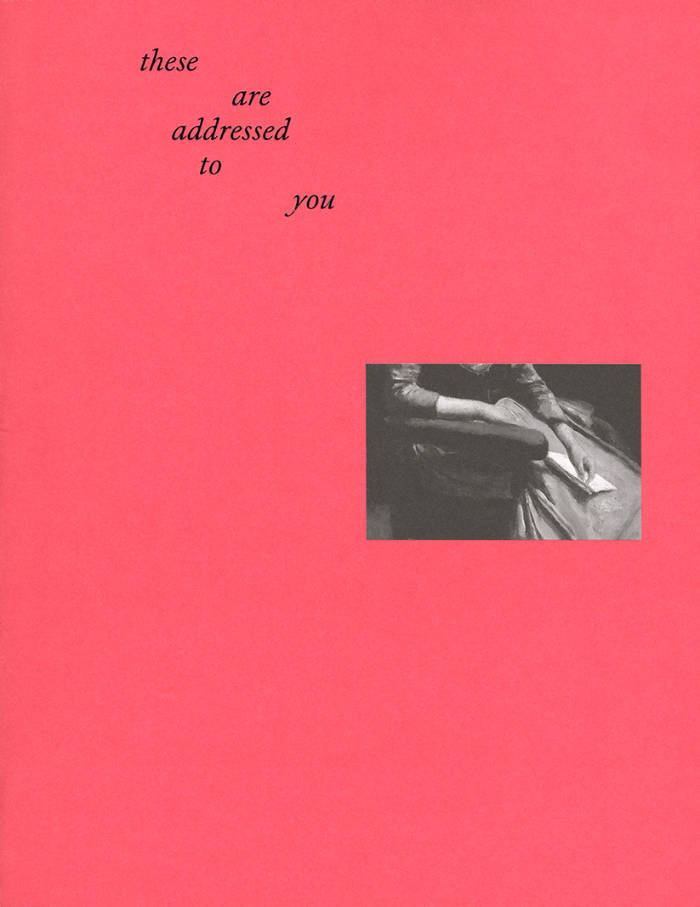
The Annotated Reader
Jonathan P. Watts ed., Ryan Gander ed.
The Annotated Reader is a publication-as-exhibition and exhibition-as-publication featuring 281 creative personalities responses and remarks on a chosen piece of writing.
Ryan Gander and Jonathan P. Watts invited a range of people, encompassing contemporary artists, designers, writers, institutional founders, musicians and so on – to imagine they’ve missed the last train.
“Is there one piece of writing that you would want with you for company in the small hours?” With this in mind, we asked people to submit a text with personal annotations and notes made directly onto it.
With over 281 contributions collected over the last few months, we have gathered a selection of contributors including Marina Abramović, Art & Language, Paul Clinton, Tom Godfrey, Ragnar Kjartansson, Sarah Lucas, Alistair Hudson and Hans Ulrich Obrist. The annotation adds a further layer, making each piece unique and a historic record of our current times.
Contributors:
Julian Abraham, Marina Abramović, Larry Achiampong, Saâdane Afif, Aaron Angell, Spencer, Anthony, Rachel Ara, Uri Aran, Cory Arcangel, Ellie Armon, Art & Language (Michael Baldwin, Mel Ramsden), François Aubart, Mary Aurory, Giles Bailey, Dan Baldwin, Fiona Banner, Simeon, Barclay, Anna Barham, Alvaro Barrington, Vanessa Bartlett, David Batchelor, Jacqueline Bebb, James Beckett, Frank Benson, Hans Berg, Emilia Bergmark, Vanessa Billy, Harry Bix, Juliette Blightman, John Bloomfield, John Bock, Doug Bowen, Benjamin Brett, Jack Brindley, Jim Broadbent, Yoko Brown, Hannah Brown, Stefan Brüggemann, Savinder Bual, Pavel Büchler, Nathaniel Budzinski, Gregory Burke, Wayne Burrows, Nikita Yingqian Cai, Mira Calix, Helen Cammock, Banu Cennetoglu, Tony Chambers, Rachael Champion, Alice Channer, Lou Cantor, Adam Chodzko, Perienne Christian, Martin Clark, Kaavous Clayton, Paul Clinton, Lucy Clout, William Cobbing, Gary Colclough, Beth Collar, Jack Cooke, May Cornet, Cel Crabeels, Paul Crook, Rob Crosse, Abraham Cruzvillegas, Francois Curlet, Matt Darbyshire, Matthew de Kersaint Giraudeau, Gabriele De Santis, Poppy De Villeneuve, Richard Deacon, Liu Ding, Stevie Dix, Nathalie Djurberg, Gabor Domokos, Lauren Doughty, Helen Dowling, Joe Dunthorne, Sam Durant, Daniel Eatock, Shannon Ebner, Sean Edwards, George Eksts, Olafur Eliasson, gerlach en koop, Vivo Enky, Gareth Evans, Alice Andrea Ewing, Sam Falls, Abbe Faria, Chantal Faust, Jes Fernie, Spencer Finch, Alice Fisher, Chris Fite-Wassilak, Sal Fontaine, Tim Foxon, Mary Furniss, Ryan Gander, Mark Geffriaud, Alessandra Genualdo, Amir George, Alexie Glass-Kantor, Patrick Goddard, Tom Godfrey, Antony Gormley, Agatha Gothe-Snape, Rodney Graham, Lavinia Greenlaw, Hannah Gregory, Joseph Grigely, Corey Hayman, Richard Hayward, Louise Hayward, Louis Henderson, Holly Hendry, Camille Henrot, Susan Hiller, Andy Holden, Ashley Holmes, David Horvitz, Alistair Hudson, Craig Hudson, Candice Jacobs, Glen Jamieson, Tess Jaray, Appau Jnr Boakye-Yiadom, Sophie Jung, John Kaldor, Allison Katz, Jasleen Kaur, Jonathan Kemp, Sharon Kivland, Ragnar Kjartansson, Lorenz Klingebiel, Matthew Krishanu, Gabriel Kuri, Zak Kyes, Emily LaBarge, Suzanne Lacy, Max Lamb, Abigail Lane, Hannah Lees, Gabriel Lester, Jenny Lindblom, Hanne Lippard, Tom Lock, Sarah Lucas, Georgia Lucas, vanessa maltese, Shepherd Manyika, Céline Manz, Michael, Marriott, Rui Mateus Amaral, Midori matsui, Rebecca May Marston, Niall McClelland, Chris McCormack, Luke Mccreadie, Francis McKee, Bea McMahon, Harry Meadley, Nathaniel Mellors, Jo Melvin, Mathieu Mercier, Daisuke Miyatsu, Jonathan Monk, Jade Montserrat, Brian Moran, Franzi Mueller Schmidt, Clive Myrie, Hiroyuki Nakanishi, Shahryar Nashat, Daniel Neofetou, Kate Newby, Simon Newby, John Henry Newton, Olaf Nicolai, Helen Nisbet, Ryan Noon, Hana Noorali, Sophie Nys, Alek O, Hans Ulrich Obrist, Harold Offeh, Ahmet Ögüt, Ima-Abasi Okon, Vanessa Onwuemezi, David Osbaldeston, Kate Owens, Jonathan P. Watts, Barnie Page, Christodoulos Panayiotou, Francesco Pedraglio, Hannah Perry, Sybella Perry, Pratchaya Phinthong, Rachel Pimm, Emily Pope, Sam Porritt, Liv Preston, Paul Purgas, Tobias Rehberger, Pedro Reyes, Emily Richardson, Jacques Rogers, #Additivism Daniel Rourke, ryanna projects (Anna Gray and Ryan Wilson Paulsen), syndicate (Sacha Leopold and François Havegeer), Giorgio Sadotti, prem sahib, Anri Sala, Margaret Salmon, Lucy A. Sames, Eran Schaerf, Annelore Schneider, Barry Schwabsky, Stephen Sheehan, Amy Sherlock, Anj Smith, John Smith, Bob and Roberta Smith, Renee So, Rustan Söderling, Nedko Solakov, Sriwhana Spong, Elinor Stanley, Georgina Starr, Astrid Stavro, Amy Stephens, Michael Stevenson, Jack Strange, Alfie Strong, Jamie Sutcliffe, Maki Suzuki, Rayyane Tabet, Mika Tajima, Lynton Talbot, Sally Tallant, Anne Tallentire, Maria Taniguchi, The Floors (Luke Dux, Ryan Dux and Ashley Doodkorte), Alice Theobald, Sam Thorne, Cara Tolmie, Marie Toseland, Rosemarie Trockel, Thom Trojanowski Hobson, Simon Turnbull, Lauren Velvick, Dana Venezia, Martin Vincent, Yonatan Vinitsky, Miriam Visaczki, Frances von Hofmannsthal, John Walter, Dan Walwin, Jessica Warboys, Ossian Ward, Evie Ward, Emily Wardill, Emily Warner, Nicholas Fox Weber, Lawrence Weiner, Charlott Weise, Richard Wentworth, Pae White, Riet Wijnen, Lillian Wilkie, Holly Willats, Issy Wood, Bill Woodrow, Seymour Wright, Shen Xin, Samson Young, Bruno Zhu, Andrea Luka Zimmerman, Andrea Zucchini, Heidi Zuckerman
Language: English







![Cover of OEI #94-95 Geografier [Geographies]](https://rile.space/storage/1488/0216_Scan2022-04-15_140650_004.jpg)